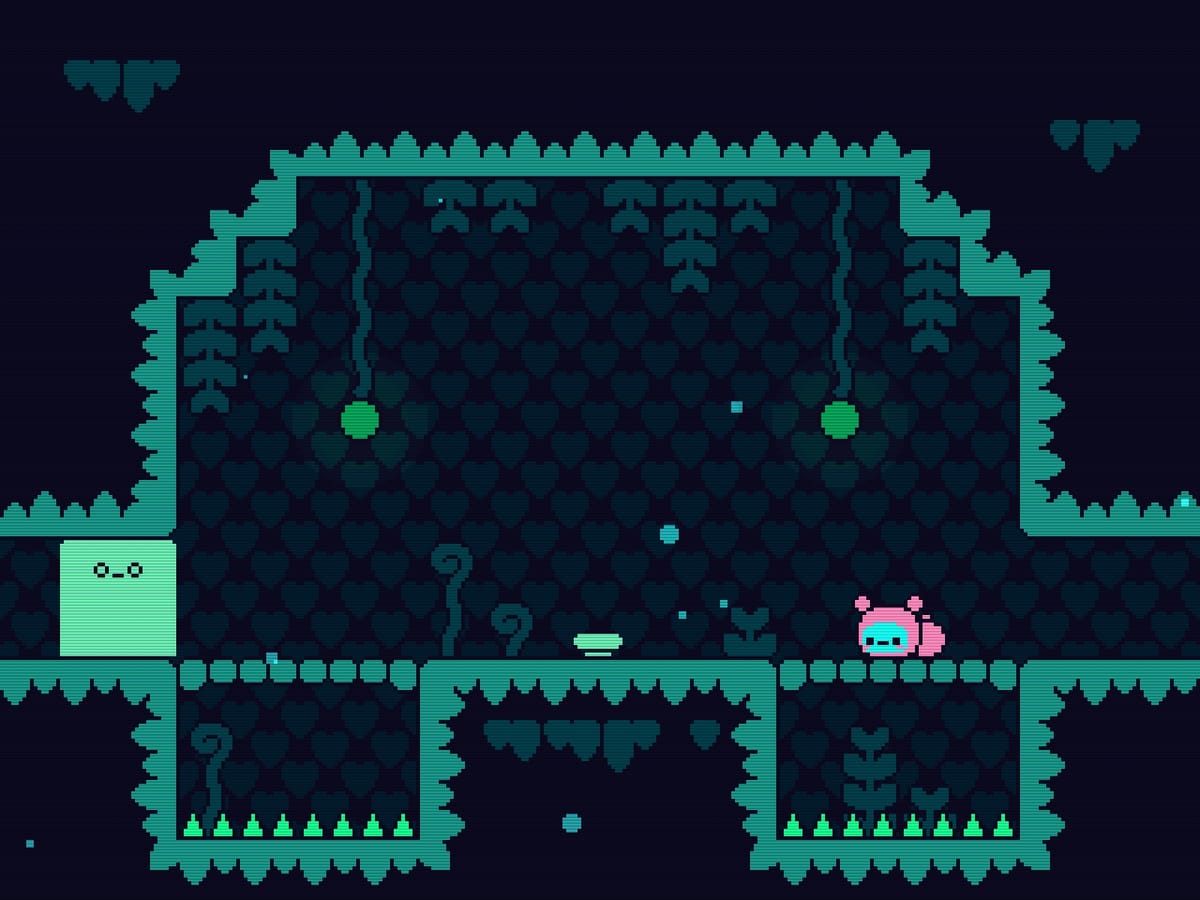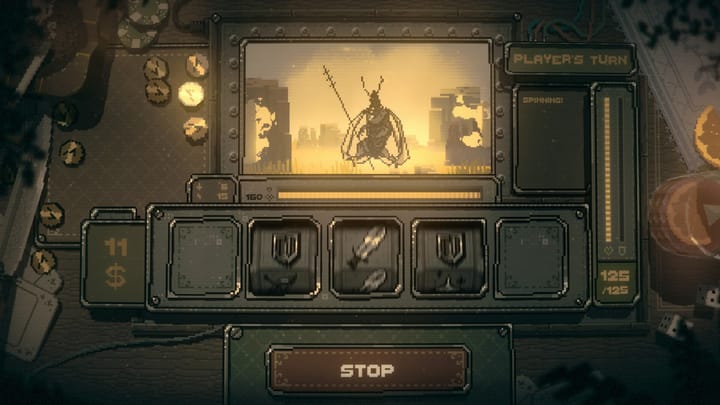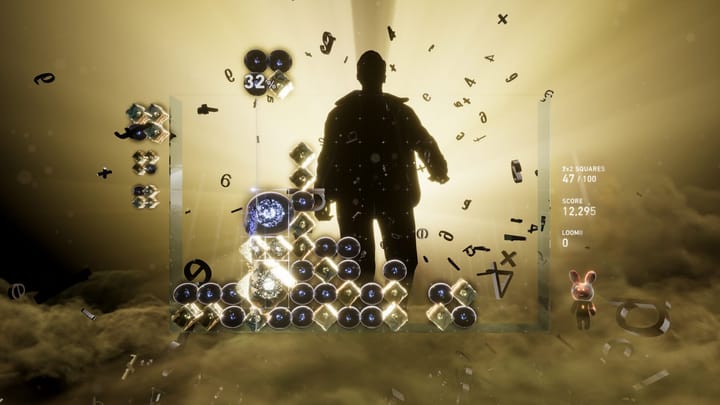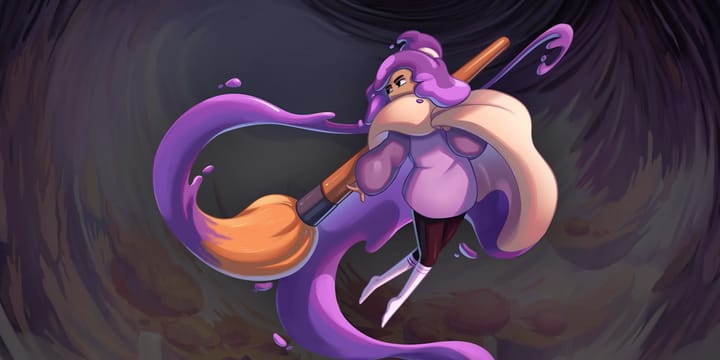"Öoo" – the name of Japanese developer Nama Takahashi follow-up to the brilliantly-minimal yet cleverly-constructed puzzle-platformer ElecHead. But also the first sound one made upon discovery that said game now has a public demo. Of which you can check out for the oh-so simple cost of around fifteen to twenty minutes of one's time. While short, brief and merely an introductory appetizer to both the game's aesthetic and core mechanics, very much like the acclaimed release of four years prior, Öoo oozes restraint and necessity on the visual language of puzzle-solving.
Better still, how to curate that crucial opening ten-or-so minutes that requires a developer to not only introduce their prime gimmick/mechanic, but prove just how flexible said mechanic can be utilised for a myriad of scenarios. To ellaborate, all while leaving room for players to stipulate on its latter potential, is not an easy task for any designer. Let alone specifically in that of a puzzle [sub-]genre whose main trait is the increasing complexity of its core gameplay. Stipulating breeds expectation, which in turn breeds the assumption that solutions are [hopefully] borne of subtle suggestion. Rules dictated and relationships between certain elements that are integral to coming to some form of conclusion/solution over.
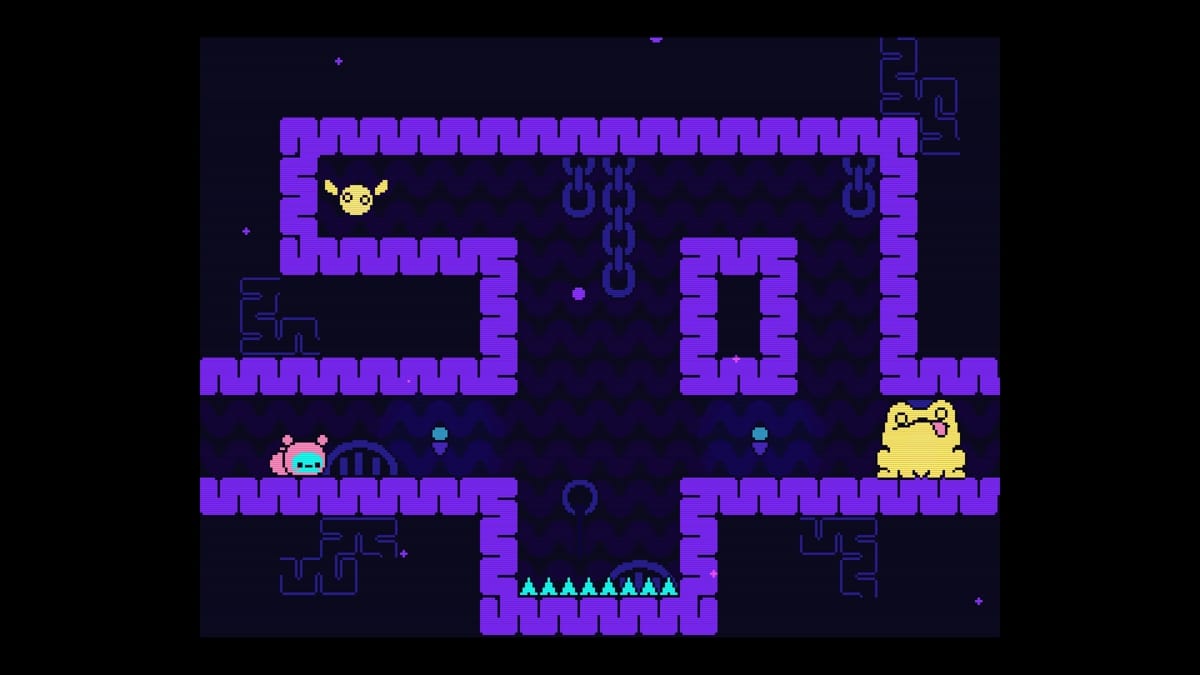
What made 2021's ElecHead so wondrous in its construction, was in the way Takahashi stripped the very nature of a puzzle-platformer down to its most raw, minimal yet crucial building blocks. Visual elements such as level design and even choice of colour curated not as some secondary splendour to the gameplay, but entirely at service to the very act of puzzle-solving itself.
How a simple swapping from one colour to the next – from steel-blue to electric-orange – could educate but also stipulate on perhaps further revelations. How the titular character's electricity-conducting abilities impacted the nature of one's surroundings. How interactions that needn't be strictly told to the player, could just as easily be worked out if one was apt enough to study not just the level in question, but that which may lie beyond such restrictions.
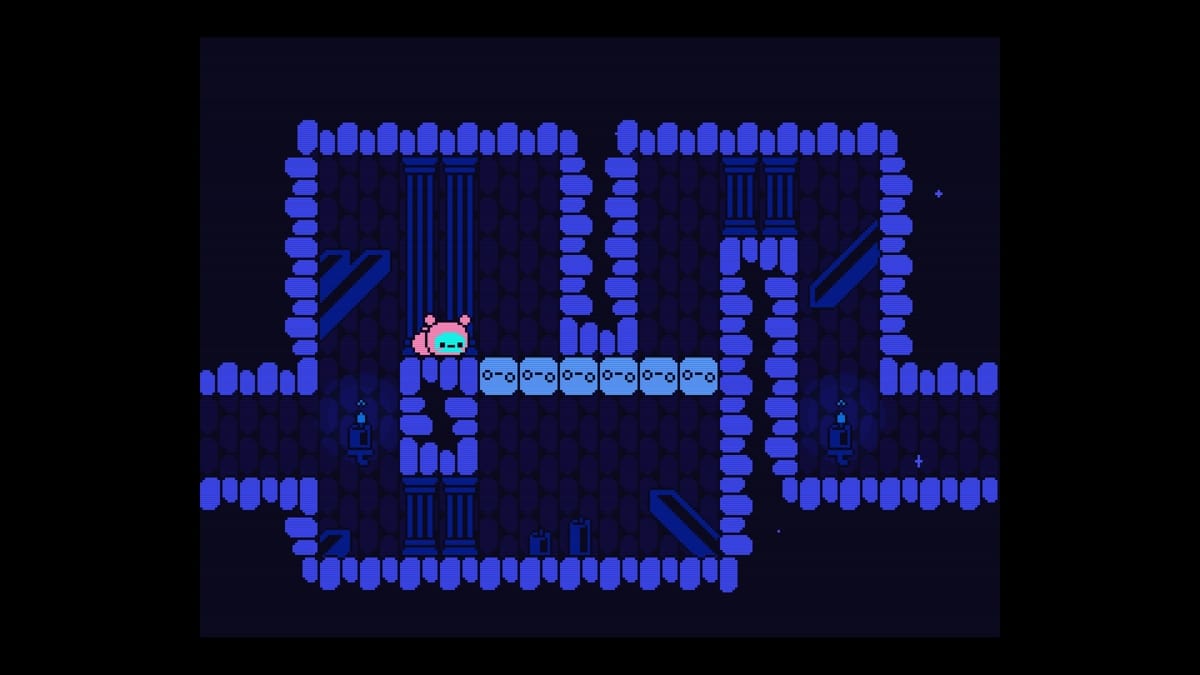
Whether or not Öoo will have as much that same revelatory amazement with its own similarly minimal artistic direction, remains a mystery. Much like ElecHead, Takahashi hasn't veered too far from the traits that made his 2021 creation a visual-language gem. Working in collaboration with Tiny Cactus Studio and Tsuyomi on the artistic and musical fronts respectively, Öoo is a stripped-back thesis on the importance of leaving players to experiment at their own pace. To surmise with barely a word or passage of text laid out, what's possible and what's not.
Playing as a bomb-spawning caterpillar creature of sorts, Öoo revolves around the physical interaction of laying out bombs to detonate. How the resulting explosions can, yes, clear out blocked passages but can also be used as a means of momentum. Because as far as capabilities go, your little pink-and-blue creature is incapable of jumping themselves. Move left, move right, spawn a bomb (maybe even more than just a single one) and work out how one's laden invulnerability to explosions can be leveraged.
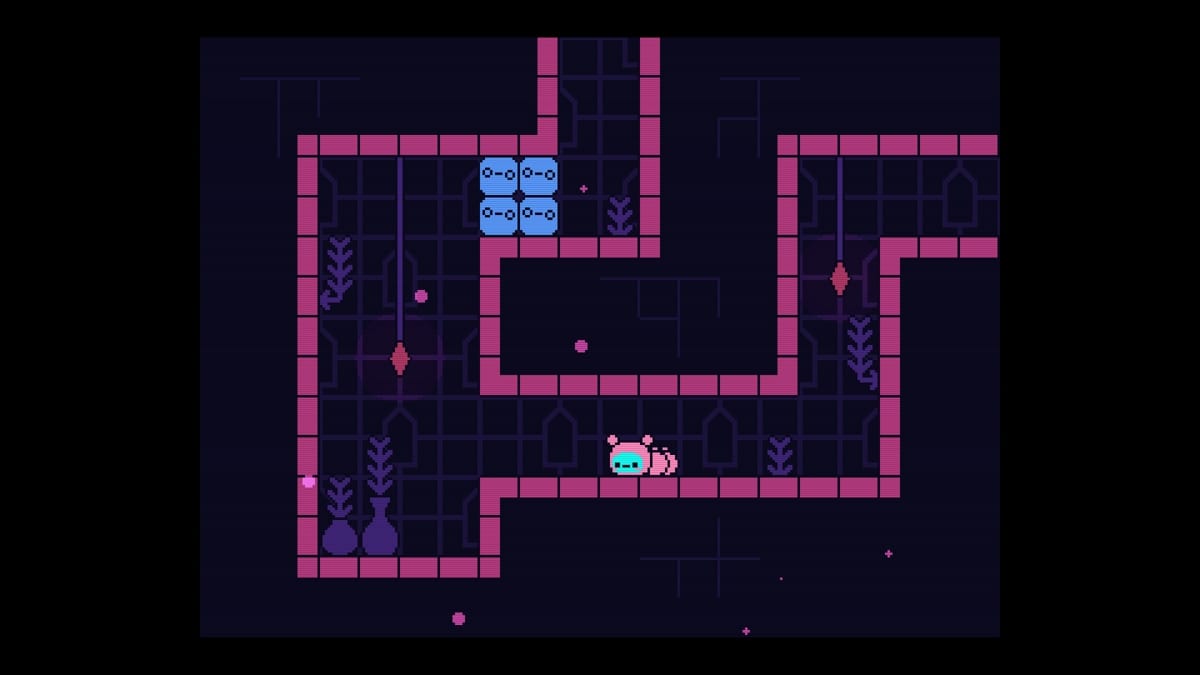
And again, just like ElecHead, what Öoo may lack at the most superficial conceptual level – clear the way to progress onward, rinse-and-repeat – Takahashi once again underscores a trust and faith in player ingenuity and indeed curiosity to attain a given solution. The latter point, that inevitable spark of curiosity, is arguably where the game's incredibly-brief demo (again, a mere fifteen to twenty minute investment) shines brightest.
At a point where the coveted "key" item is nowhere to be seen – a seemingly empty room, all while still obstructing one's progress. But look a little closer, study the very shape and outline of one's surroundings and without even being told that your trustee bombs are even capable of such a feat, that moment of revelation eventually hits.
It's these little, short bursts of ingenuity that made ElecHead such a delightful example of the power of visual language. How even a minimalistic art-style, colour palette and indeed semi-abstract reduction in structure, could still provide ample eureka moments. Moments players reach themselves, but only do so because all elements in a game's make-up, are working in tandem to both educate and inspire players to tinker with the tools at their disposal. Colours collaborating with interactions which in turn are networking with everything else going on around the player.
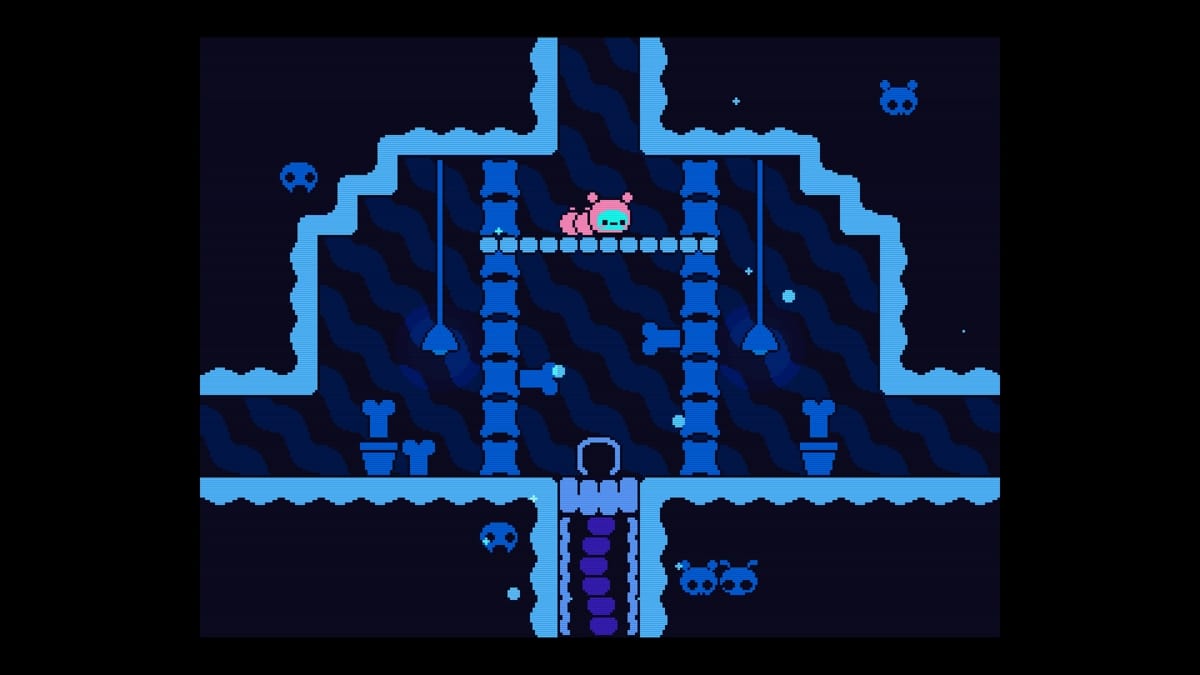
One would usually hope that any demo released for an upcoming game, would prove sizeable and sufficient enough in its content. A teaser for what may be, but informative enough that players know exactly what they're getting into and why indeed they should be keeping an eye on this game over countless others. An acclaimed puzzle-platformer already under his belt he may already have, Nama Takahashi is once again proving, in as little more than fifteen minutes, that so much can be said with so little. Or in Öoo's case, very little at all.
If the Japanese developer's latest is anything remotely as remarkable as ElecHead was – a game of meteoric personal favour, whose very leftfield presence made it one of the best releases of its respective year – we could be on for yet another clever subverting of video game visuals. An aspect to game design that labours not just to stand as mere decoration, but serves as the very prompts and tools to utilize in their own right.


